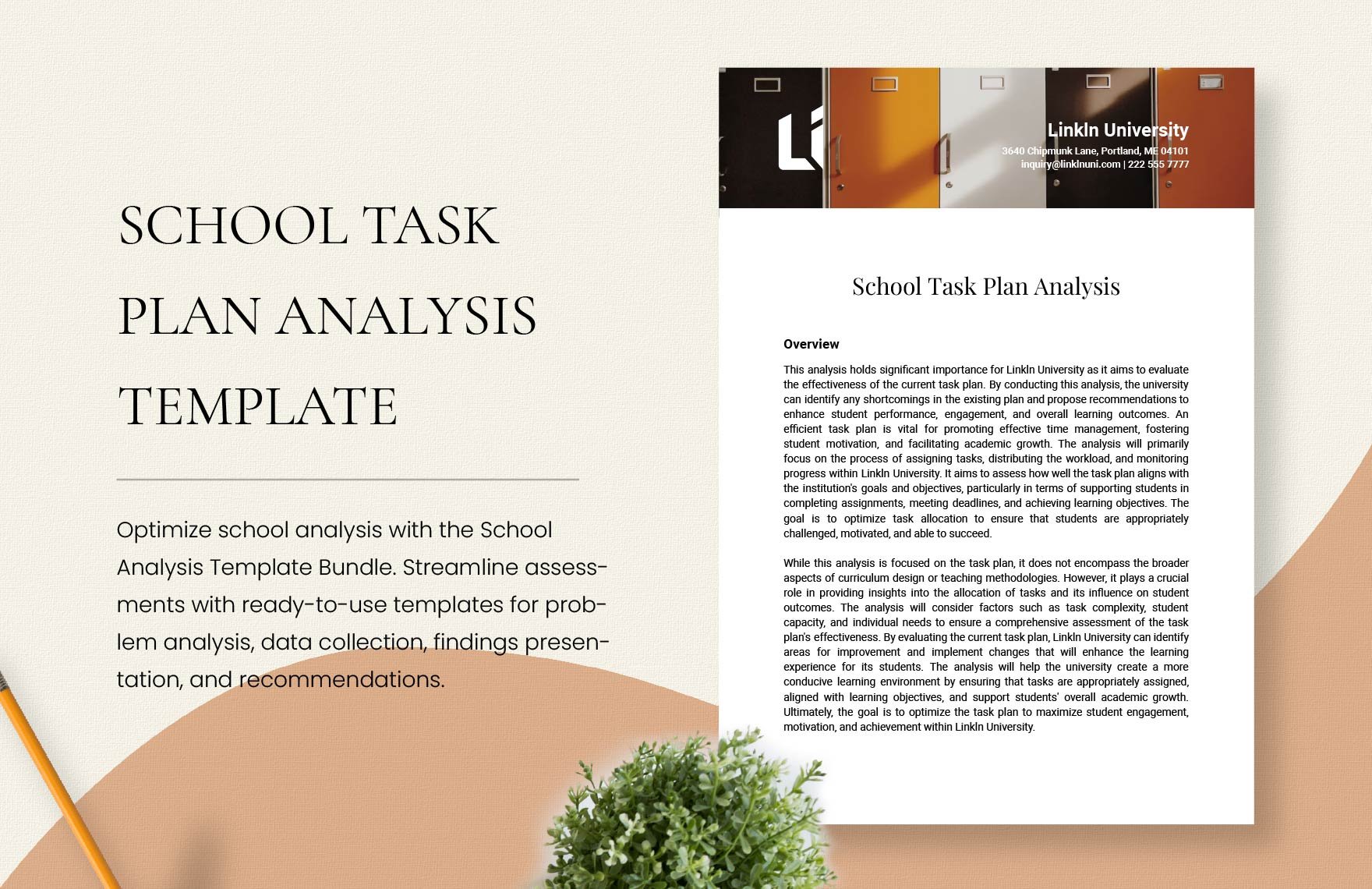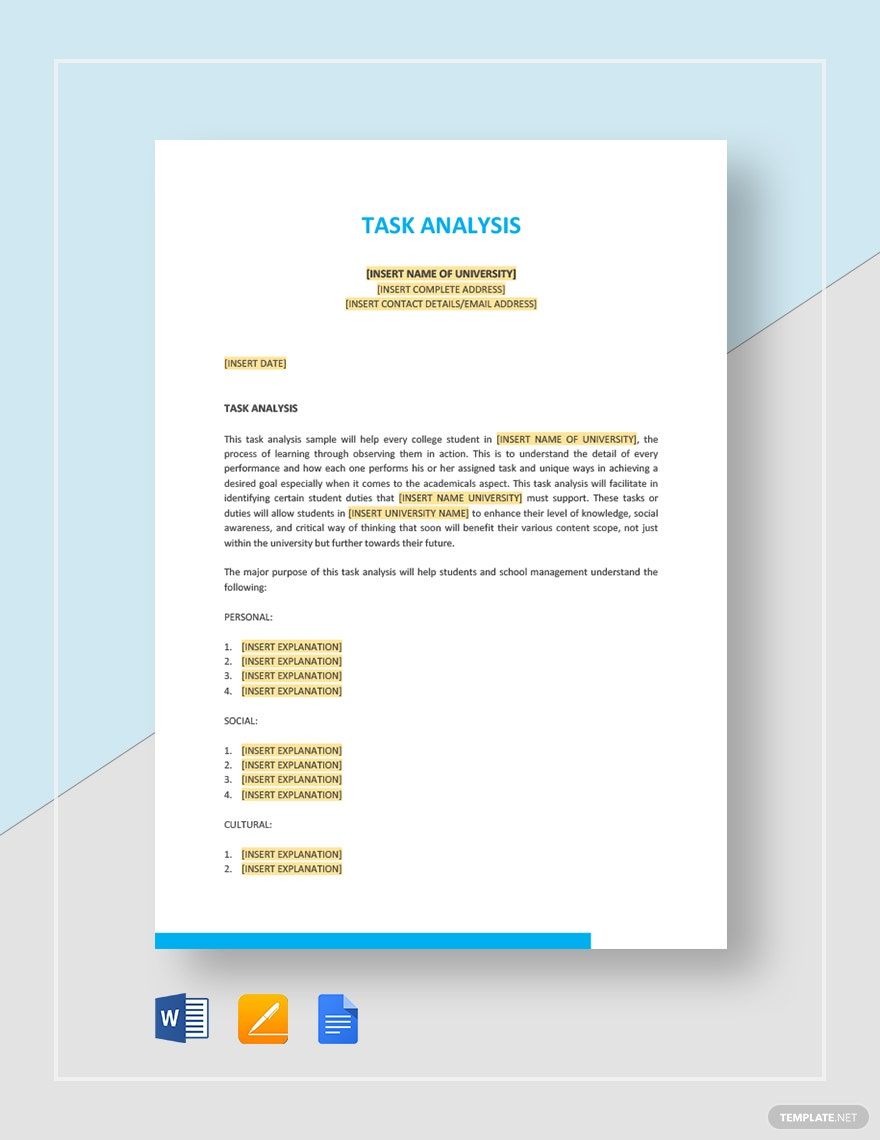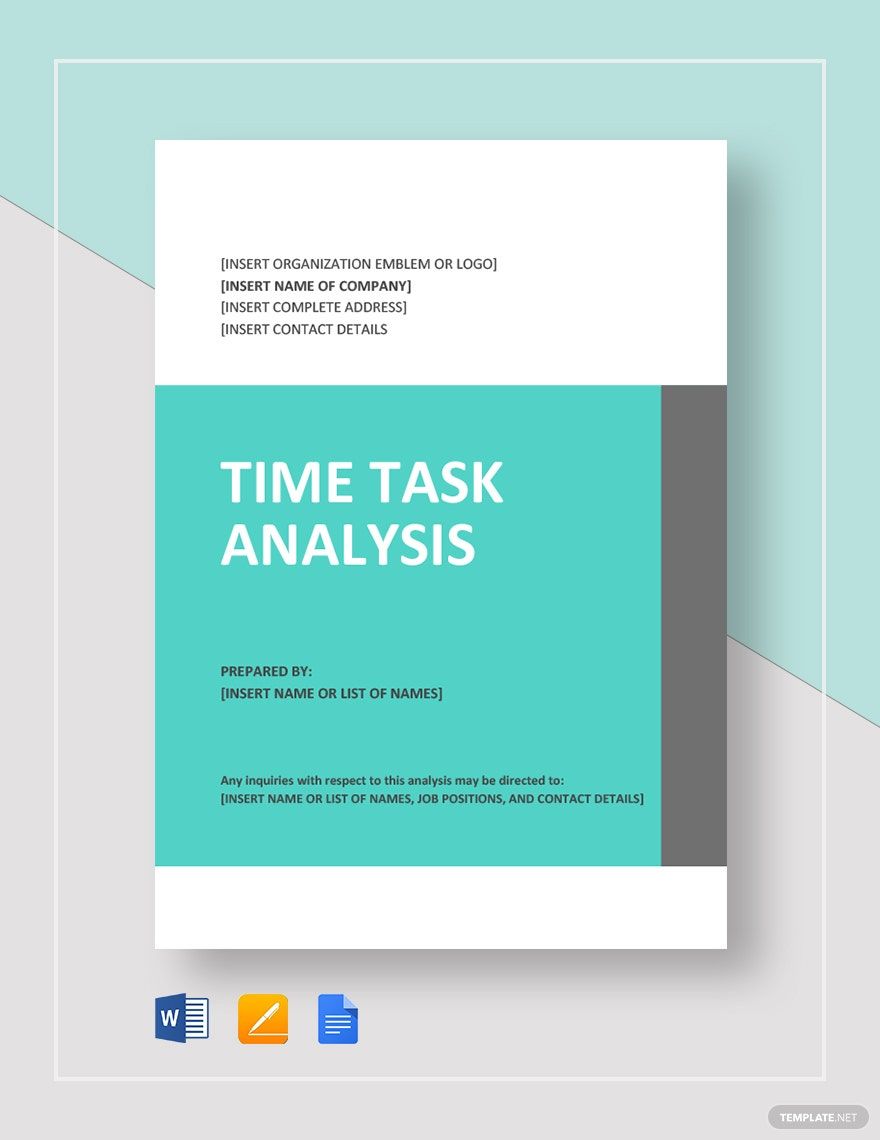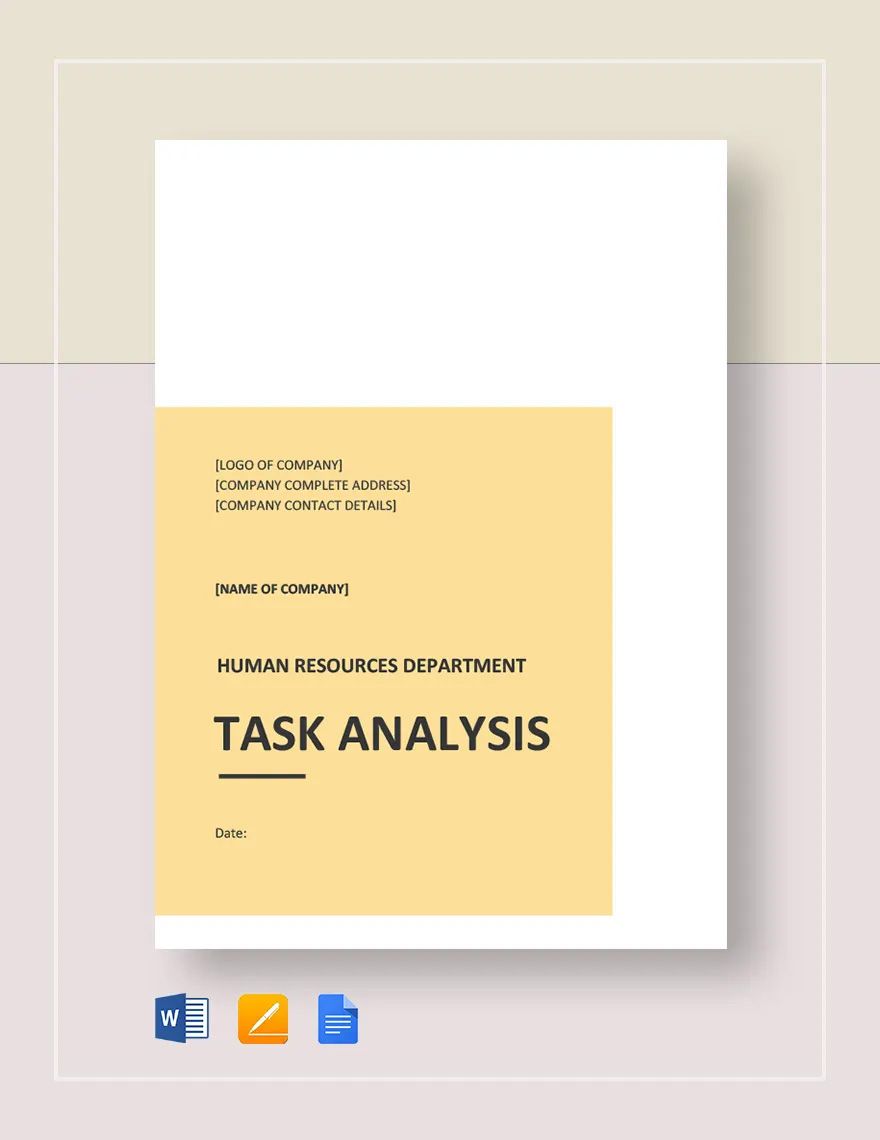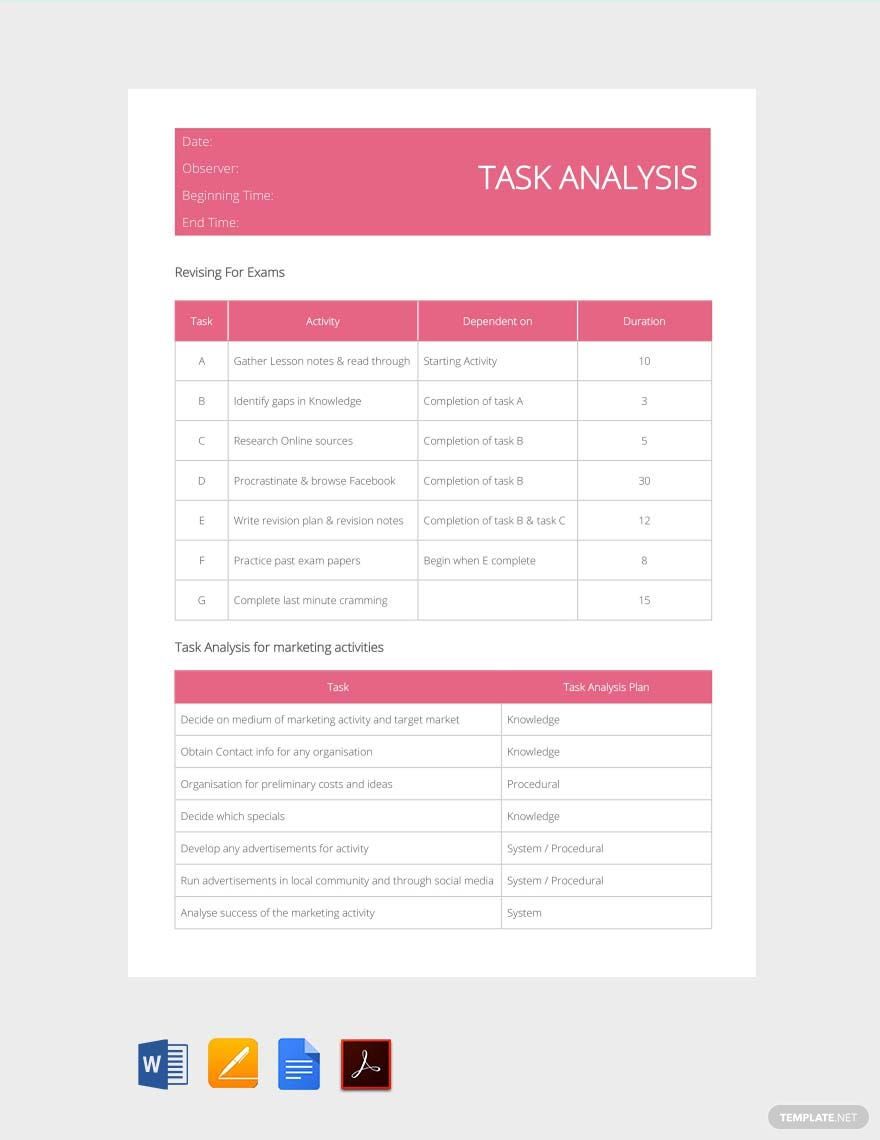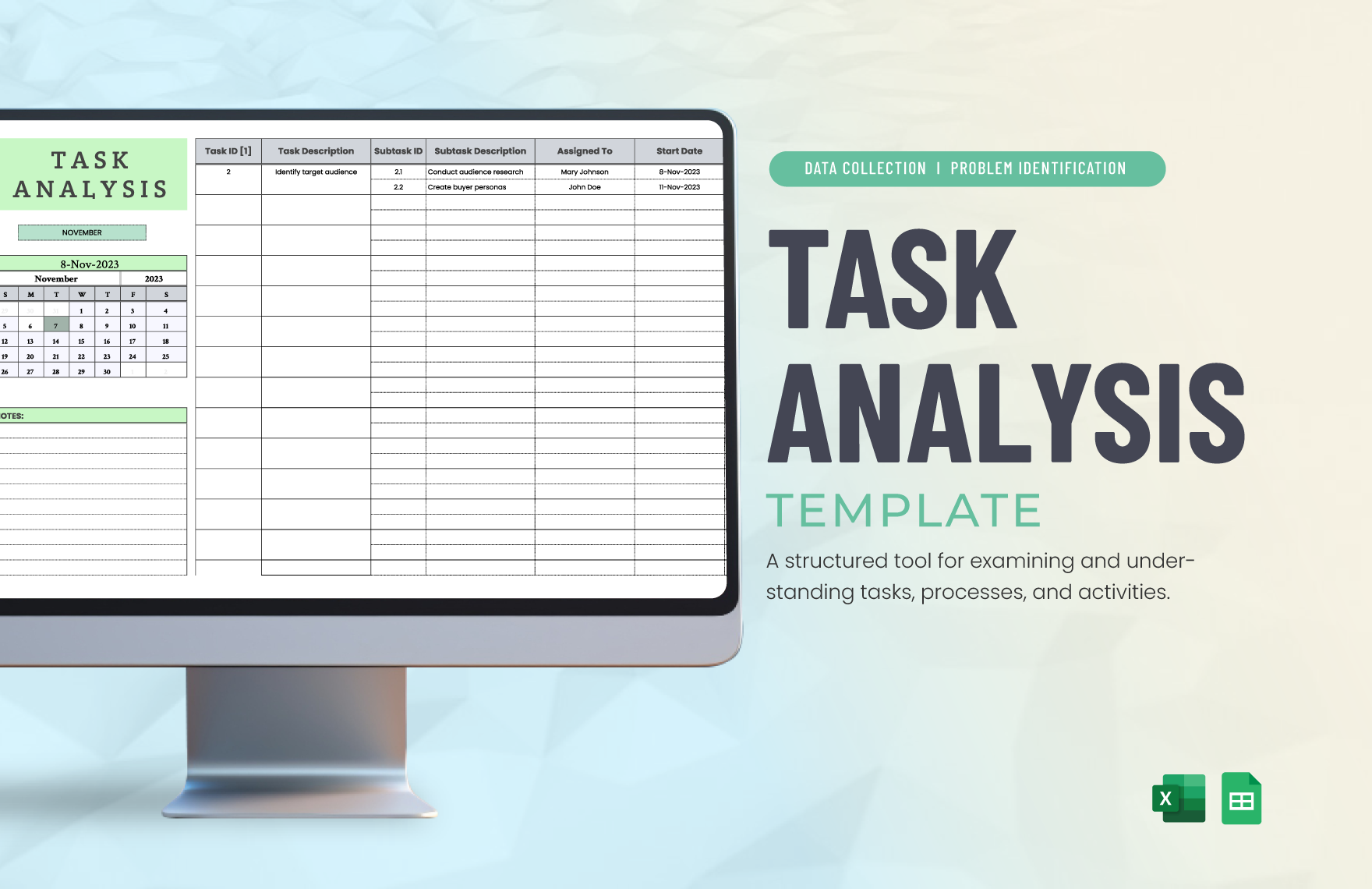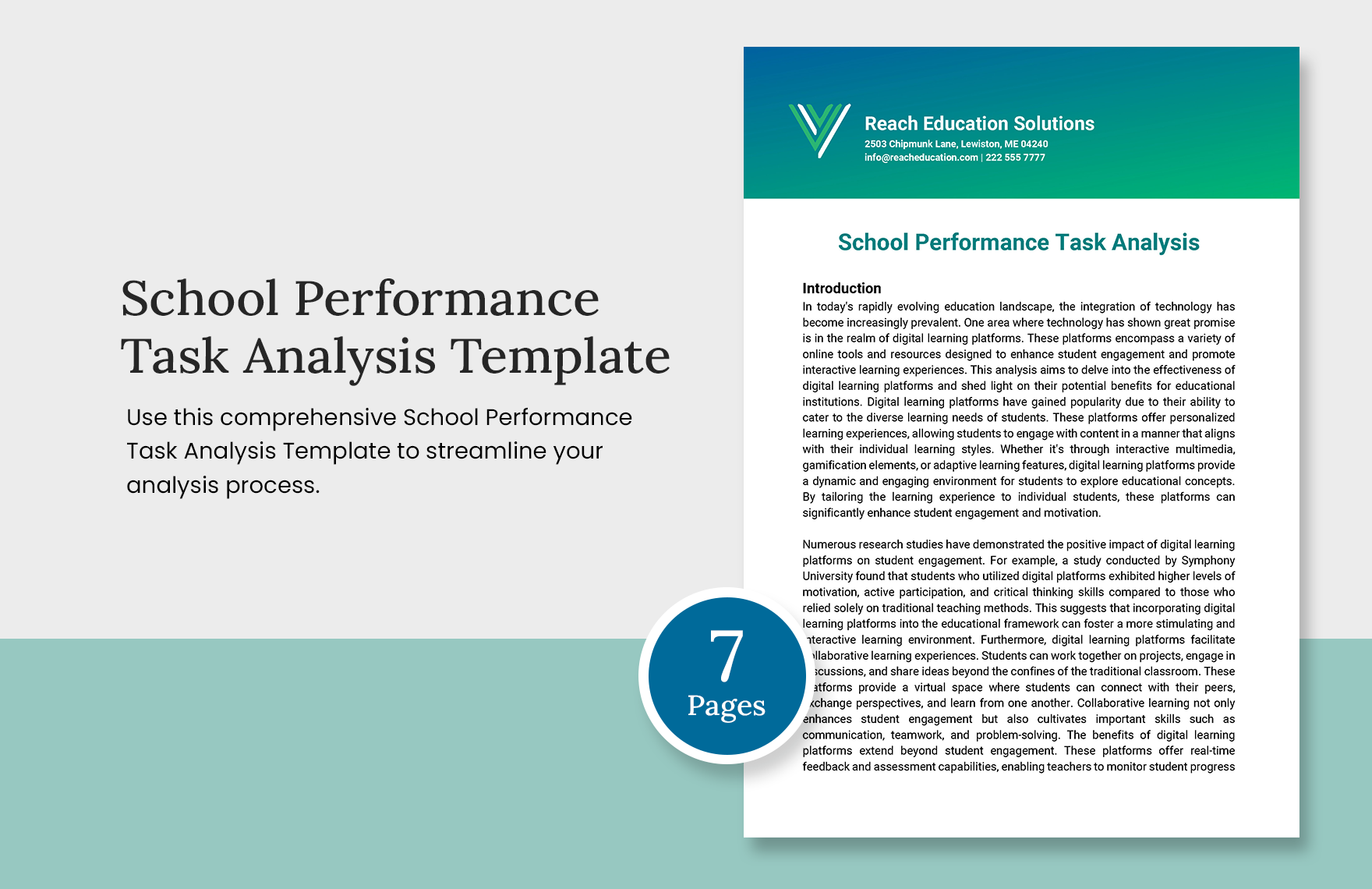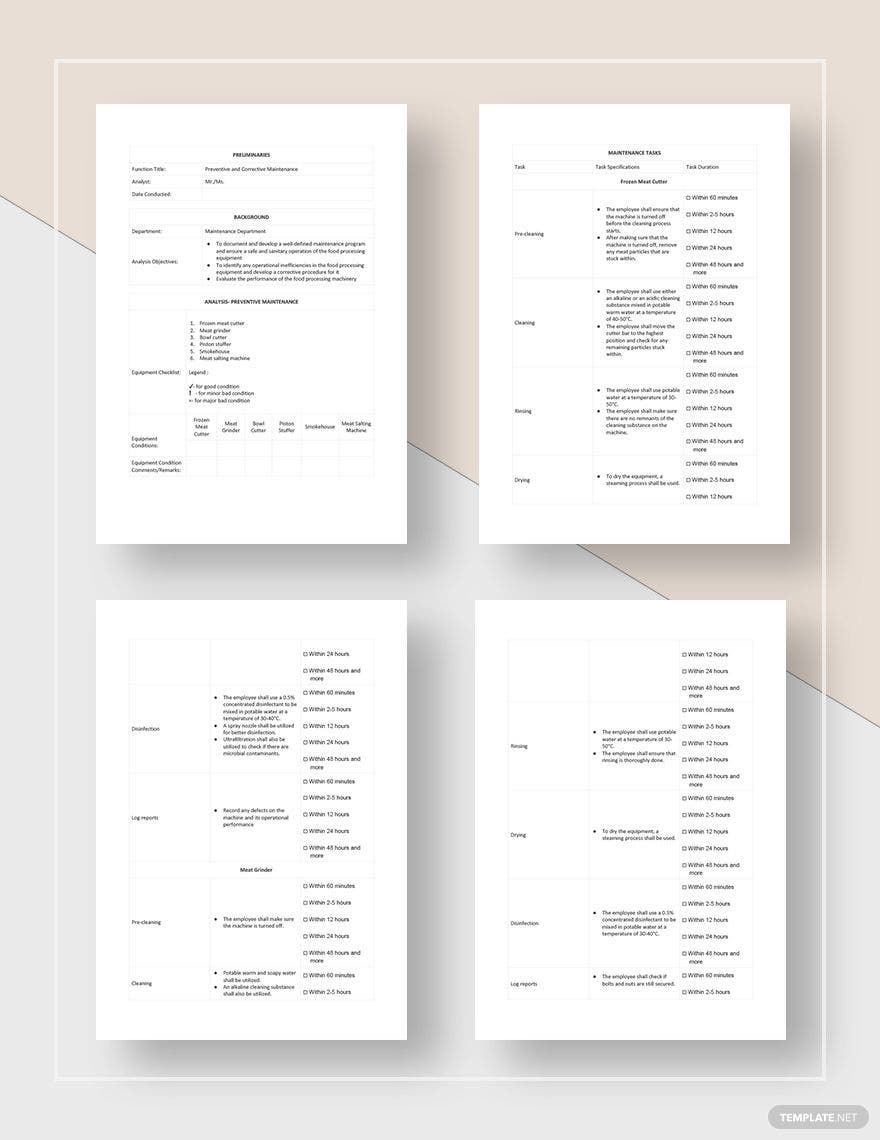Need help in breaking down big tasks into small and manageable ones? Help your company to effectively implement tasks through our task analysis templates. Our 100% customizable, easily editable, high-quality, and professionally written Task Analysis Templates are suitable for any human resources department in any company. These templates will greatly help you in maintaining the company's records. We also offer this versatile template in all file formats that are accessible and handy. If you wish to print it, you can print it to legal sizes available (A4 and US). So download them right now and you can immediately experience our premium product made especially for you!
How to Write a Task Analysis?
A task analysis is a business analysis that evaluates employee tasks to improve the business processes that are being run by the company. This is also a type of document that translates as to how the task is accomplished, including the precise definition of both visual task and mental activities held, work duration, frequency, allocation, complexity, environmental status, or any other factors involved to perform the employee task given. A task analysis can be used as personnel selection and skills training, equipment design, procedure, sample checklist, etc. There are two types of task analysis: cognitive task analysis and hierarchical task analysis. It is also used as an employee reference for future use.
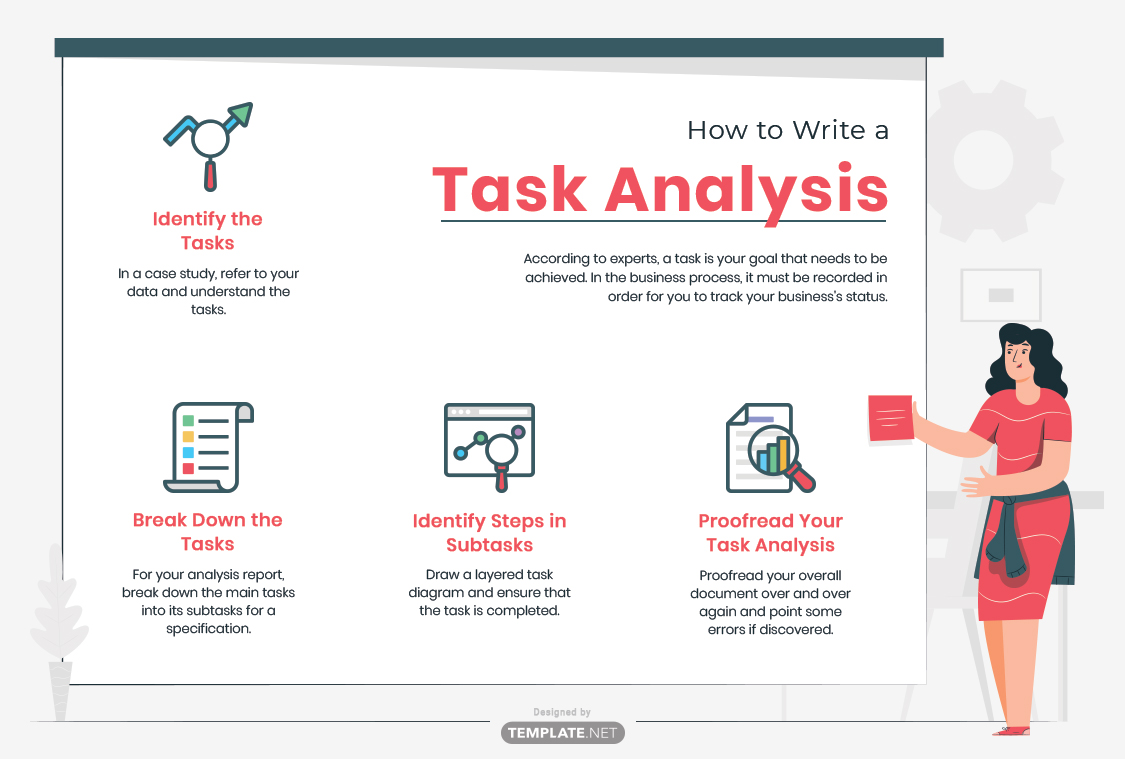
According to experts, a task is your goal that needs to be achieved. In the business process, it must be recorded in order for you to track your business's status. In making this possible, you would need to assign the job in executing a data analysis from your task. If you are one of the people assigned to do so, here are helpful tips as to how to write a task analysis for your business.
1. Identify the Tasks to Be Analyzed
In order for you to make a simple analysis for your business, identify as to what task you are analyzing. In a case study, refer to your data and understand the tasks. For instance, if you want to conduct a task analysis in your job training, you must know who, when, what, and why the training is held and the tasks needed to be accomplished.
2. Break Down the Tasks
For your analysis report, break down the main tasks into its subtasks for a specification. These should be brief and concise and must start with an action verb. It avoids the vagueness and generality of the task. Afterward, you can define the tasks one by one to its extent. It must include its own objectives and must cover the whole area of interest.
3. Identify Steps in Subtasks
Now that you have broken down your tasks into subtasks, identify, and list steps for each subtask. List the chronological order of steps of the subtasks. Use the Goldilocks approach: not too much but not too little. The right amount will let the subtask identification brief yet concise. Draw a layered task diagram and ensure that the task is completed. It must be represented accurately and completely. After confirming that the task has been done, resume to the next step.
4. Proofread Your Task Analysis
Proofread your overall sample analysis over and over again and point some errors if discovered. If you are not confident enough with it, you can assign a professional to proofread it for you. In that way, the consistency would be evaluated and be corrected. Remember to decide as to what level of detail you are going to dissect your subtasks so that the consistency would be constant.


